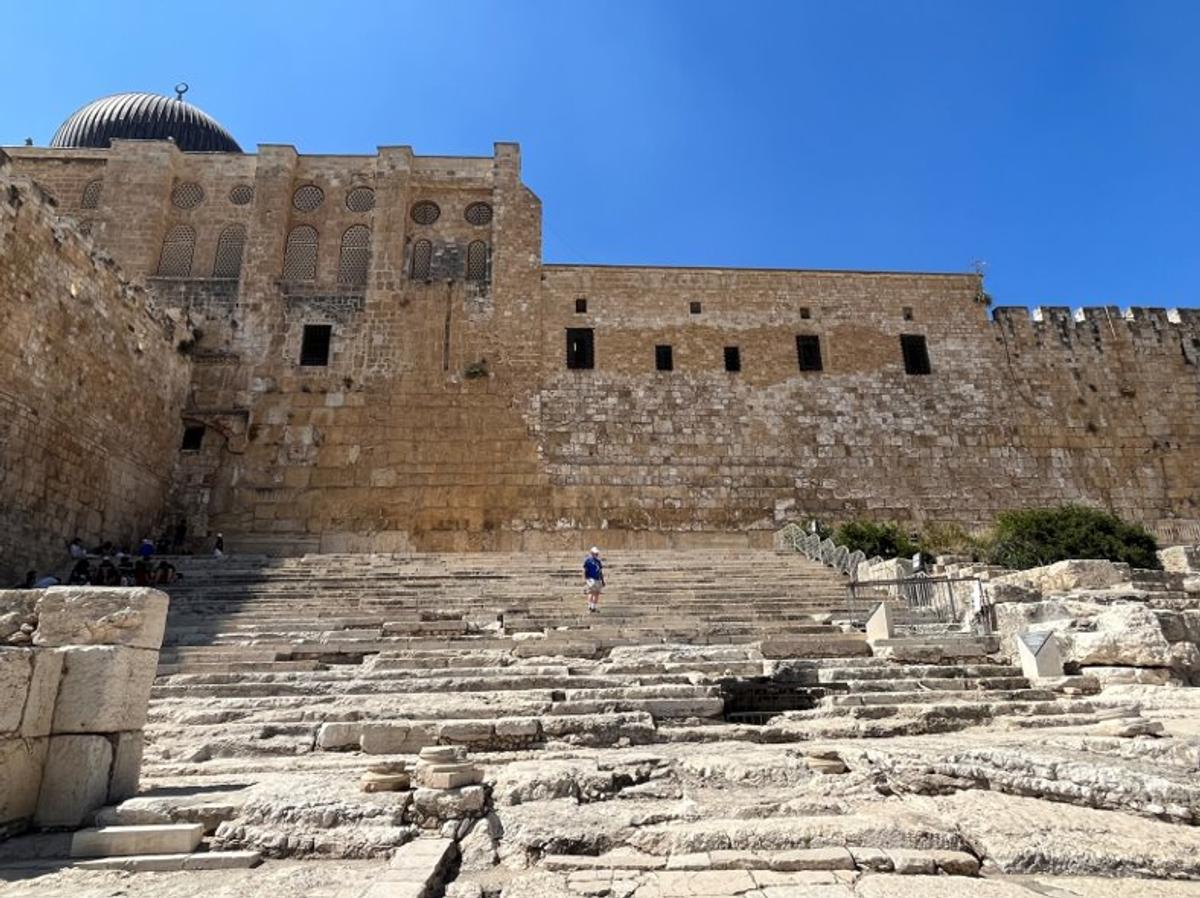Editorial
Editorial

Editorial
Editorial
Recently, I had the opportunity to journey to the Holy Land and spend two weeks in the Old City of Jerusalem engaging with the Bible, the people, and the land through a study of the Gospel of Mark offered by the Centre for Biblical Formation. Immersing myself in the Gospel of Mark while retracing the very paths and locations where the events of the Gospel took place, brought the text to life in a profound way.
My time in the Holy Land was nothing short of transformative, a captivating journey that immersed me in the intertwining threads of people, history, and spirituality. One cannot help but feel the weight of history while wandering through the cobbled streets of Jerusalem's Old City. Its ancient streets have witnessed the rise and fall of civilizations, the stories of prophets and kings, and the convergence of three major religions. Each stone tells a story, and every corner offers a glimpse into the past.
Staying in the Old City of Jerusalem allowed me to experience the significance of this area for the three main Abrahamic religions; Judaism, Christianity and Islam. Each day, thousands of locals and pilgrims alike engage in prayer at the many sacred sites within the Old City.
The Western Wall, also known as the Kotel in Hebrew, is the only remaining part of the retaining wall surrounding the Temple Mount which was the site of the First and Second temple in Jerusalem. It is considered the most holy site in Judaism and is therefore a place of profound prayer, reflection, and remembrance. At any time of the day, you will find hundreds of Jews praying against the Western Wall and studying the Torah.


While those of Jewish faith pray and study at the Western Wall, followers of Islam flock to Al-Aqsa Mosque on the Temple Mount, which together with the golden dome of the Dome of the Rock, can be seen from afar. Responding to the ‘Call to Prayer’ that sounded from the minarets and echoed through the Old City five times each day, Muslims of all ages could be seen making their way through the cobble stone streets to the mosque.


Together with hundreds of other Christian faithful, we waited our turn to enter the small grotto in Bethlehem and touch the site where tradition says Jesus was born. Further north, the Sea of Galilee's shores came alive with the stories of Jesus' teachings and miracles and the Mount of Beatitudes, where he delivered the Sermon on the Mount, carried a weight of significance that transcends time.
What impacted me most deeply, however, was walking in the footsteps of Jesus for what was the final week of his life from the top of the Mount of Olives to the Church of the Holy Sepulchre, pausing to read passages from the Gospel and pray at the stations along the Way of the Cross.
As I walked the path that Jesus once trod, I couldn't help but feel a sense of awe and reverence. The Mount of Olives, with its ancient olive trees and breath-taking view of Jerusalem, serves as a powerful reminder of the natural beauty that surrounded Jesus during his time on Earth. It's a place where he often retreated for prayer and reflection, and I could almost imagine him seeking solace beneath the same ancient trees.
Arriving at Gethsemane, I was struck by the weight of what took place in this sacred garden. This was where Jesus grappled with the enormity of his impending crucifixion. The Gospel of Mark describes Jesus throwing himself on the ground and praying, “Abba, Father, for you all things are possible; remove this cup from me, yet not what I want but what you want.” (14:36). Walking through the garden with ancient olive trees, some of which are believed to date back to the time of Jesus, I could sense the anguish and inner turmoil that Jesus must have felt.
The most sacred site for Christians in the Old City is of course the Church of the Holy Sepulchre which is believed to be the site of Jesus Christ's crucifixion, burial and resurrection. The Via Dolorosa marks the path that tradition says Jesus walked after being condemned to death and each day hundreds of Christians walk ‘the Way of the Cross’ stopping to pray at each of the Stations. To walk the path that Jesus took from his condemnation to his crucifixion and resurrection was very sobering. It brought the Gospel narrative to a deeply personal and emotional level.
I feel incredibly blessed and fortunate to have had this opportunity for spiritual reflection and growth, to trace the footsteps of Jesus and his ministry in the Holy Land, and to engage deeply, through scripture study, with the Gospel of Mark. The experience has left an indelible mark on my heart and mind.


Nicole Mangelsdorf Principal, Kilbreda College
Nicole's presentation of with more photos from the trip can be viewed by clicking here.